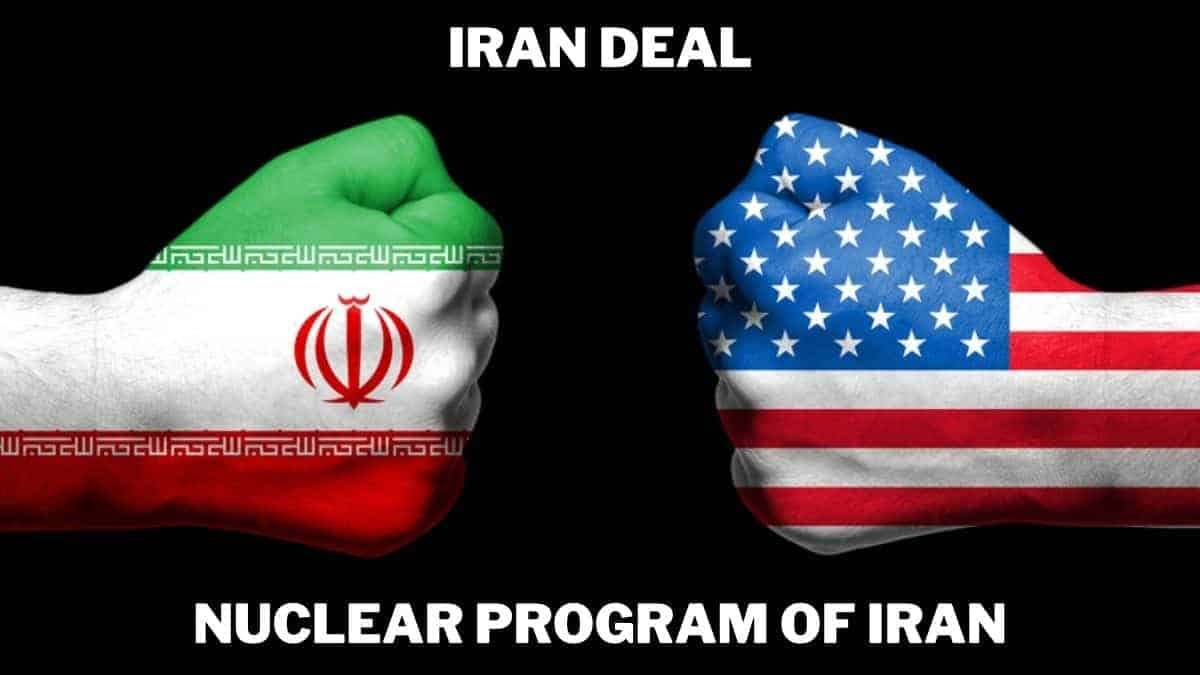Iran Deal V. Nuclear Program of Iran

What is the Iran deal?
Iran deal, officially known as the Joint Comprehensive Plan of Action (JCPOA), is an agreement on the Iranian nuclear program. Iran deal was agreed in Vienna on 14 July 2015, between Iran and the P5+1. P5+1 refers to the five permanent members of the United Nations Security Council (China, France, Russia, the UK, and the US) and Germany. And the European Union was also part of the deal.
Deal aim’s to have Iran slow down its nuclear program. To an extent that if Iran decided to build a nuclear weapon, it would take at least a year, giving the rest of the world to respond.
Iran agreed to the deal at that time. Iran pulled back much of its nuclear program in exchange for billions of dollars worth of sanctions relief.
Under the Iran Nuclear Deal, the US only lifted nuclear-related sanctions on Iran. The other sanctions remained in a place like – sanctions on missile technologies & conventional weapons, terror list sanctions, ballistic missiles, human rights abuses, and censorship, destabilizing regional activities.
What if Iran Deal does not exist?
As per the deal, Iran must reduce its uranium stockpile by 98 %. And should also keep uranium enrichment to 3.67 %(below the enrichment level needed to create a bomb).
Iran was said to have a uranium stockpile capable to create 8 to 10 nuclear bombs.
Following the deal, Iran must reduce its centrifuges to 6,104 for the next 10 years. Enrichment at Fordow and Natanz must be blocked. And the only centrifuges Iran will be allowed to use are their oldest efficient versions.
For creating Nuclear bombs, Iran needs tens of thousands of centrifuges and highly enriched uranium. Iran was said to have around 20,000 centrifuges between their Natanz and Fordow uranium enrichment facilities.
Without Iran Deal, Iran has the potential to create a bomb, within 2-3 months. Because of its main resources which Iran deal should block.
What if Iran chooses a secret nuclear program?
Besides these declared sensitive facilities, Iran can try to build nuclear weapons in secret locations too.
The Iran deal takes care of this also as it claims. Under the deal, Iran has committed to extraordinary and robust monitoring, verification, and inspection. International inspectors from the International Atomic Energy Agency (IAEA) will not only be continuously monitoring every element of Iran’s declared nuclear program, but they will also be verifying that no fissile material is covertly carted off to a secret location to build a bomb.
So, under the deal International Inspectors was meant to monitor Iran’s nuclear program at every stage.
What is the Nuclear Program of Iran?
The Nuclear Program of Iran refers to the scientific effort to research nuclear technology and allegedly develop nuclear weapons.
As per research, Iran has large enriched uranium and plutonium stockpile and around 20,000 centrifuges This is enough to create 8 to 10 bombs. If Iran plans to make a bomb as fast it can, it would take them 2 to 3 months until they had enough weapon-ready uranium (or highly enriched uranium) to build their first nuclear weapon. If Iran continues with its Nuclear Program, the stockpile and centrifuges would grow exponentially, as per sources. And that would be a world’s concern.


